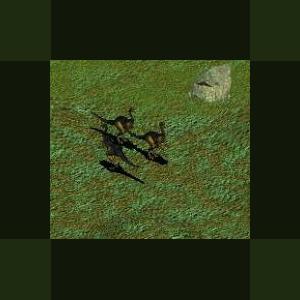About This File
Dromiceiomimus (meaning "Emu mimic") was a swift bipedal dinosaur from the late Cretaceous period, about 80 to 65 million years ago
It was about 12 feet (3.5 m) long and weighed about 220 to 330 pounds (100 to 150 kg). Its femur (thigh bone) was 468 mm long. This ornithomimid (a bird-like theropod) had very long limbs, hollow bones, and a large brain and eyes. It had a toothless, beaked mouth, and weak jaws.
The brains of ornithomimids were large for dinosaurs, but this may not necessarily be a sign of greater intelligence; some paleontologists think that the enlarged portions of the brain were dedicated to kinesthetic coordination. Compared to other ornithomimosaurs Drimiceiomimus had a short back, long slender forearms, very large eye sockets, and pelvic bones that were arranged somewhat differently.
The first fossil remains of this genus were discovered in the 1920s, and originally named Struthiomimus brevitertius and S. samueli. It was renamed by Russell in 1972 to D. brevitertius after an extensive review of North American ornithomimosaurs, which he reclassified into three genera: Dromiceiomimus, Ornithomimus, and Struthiomimus. Alberta, Canada's Horseshoe Canyon and Judith River Formations have yielded fossils of both adults and juveniles. The top speed of this dinosaur is believed to be 40 mph.



Recommended Comments
There are no comments to display.
Create an account or sign in to comment
You need to be a member in order to leave a comment
Create an account
Sign up for a new account in our community. It's easy!
Register a new accountSign in
Already have an account? Sign in here.
Sign In Now